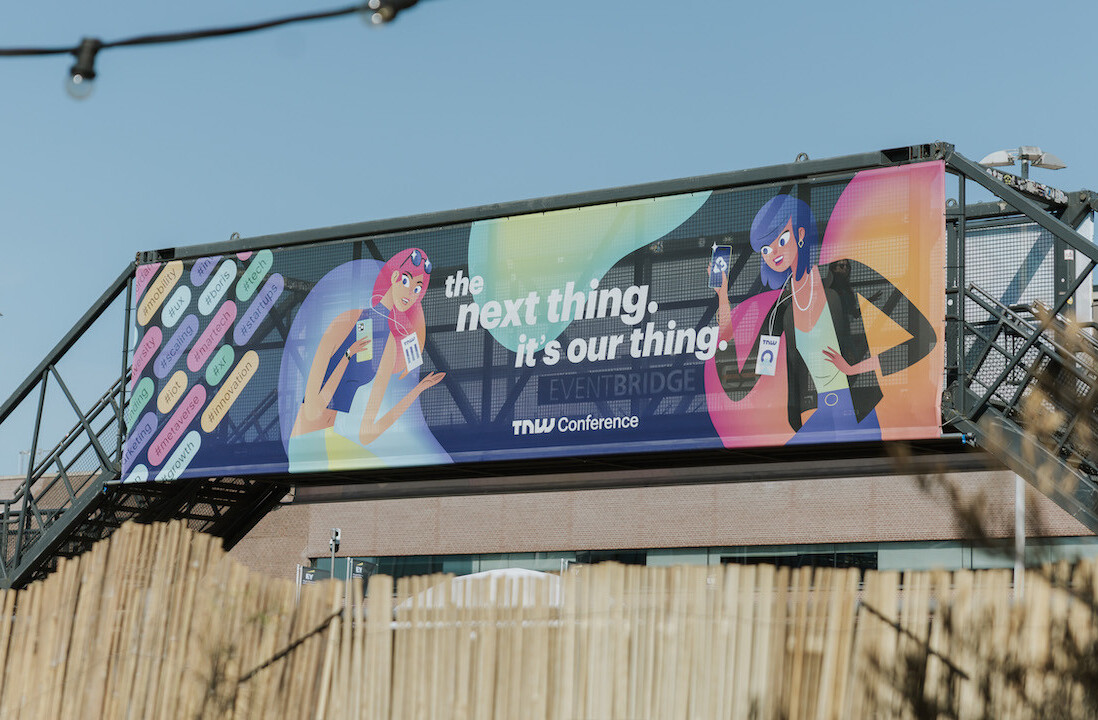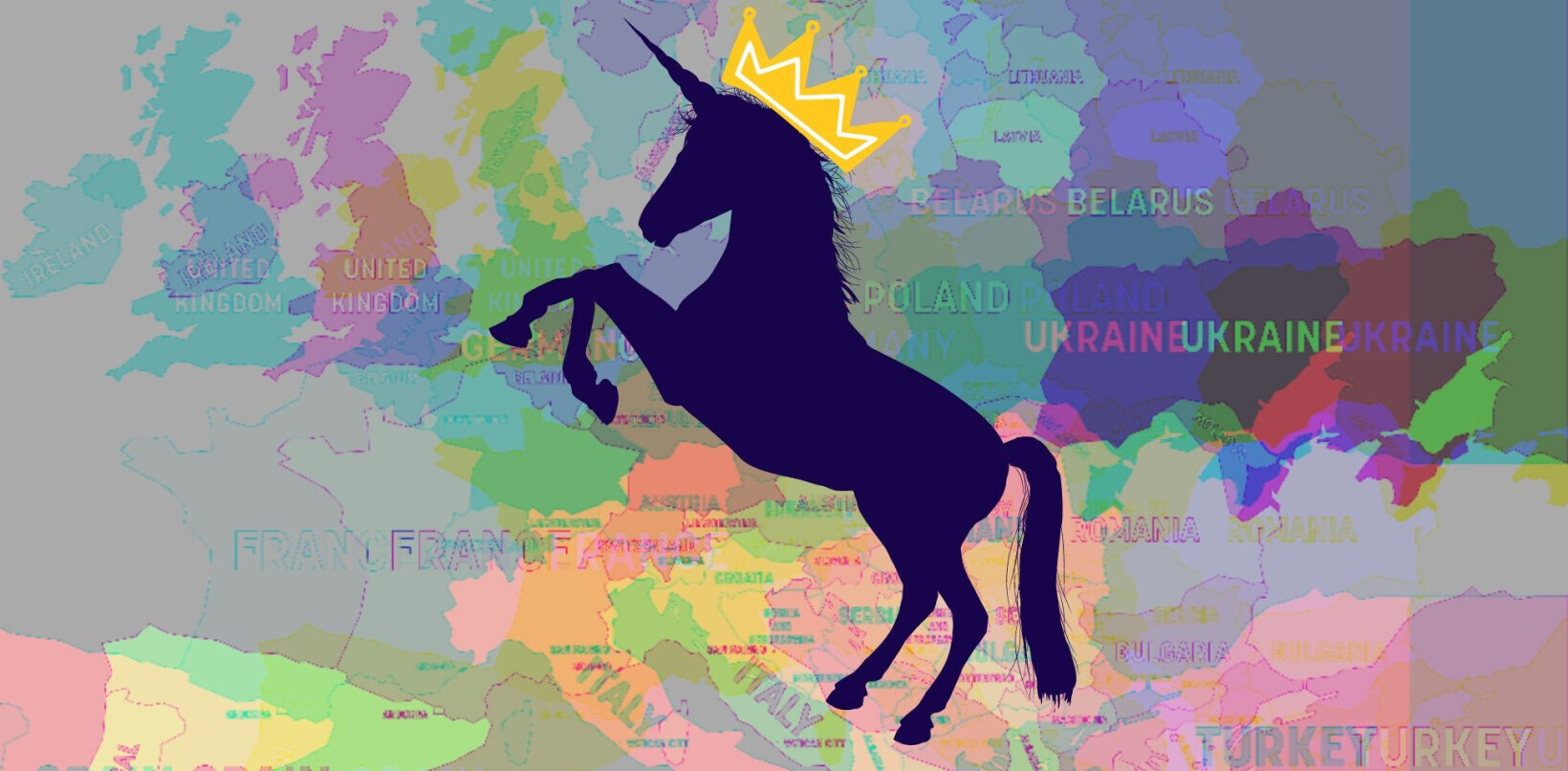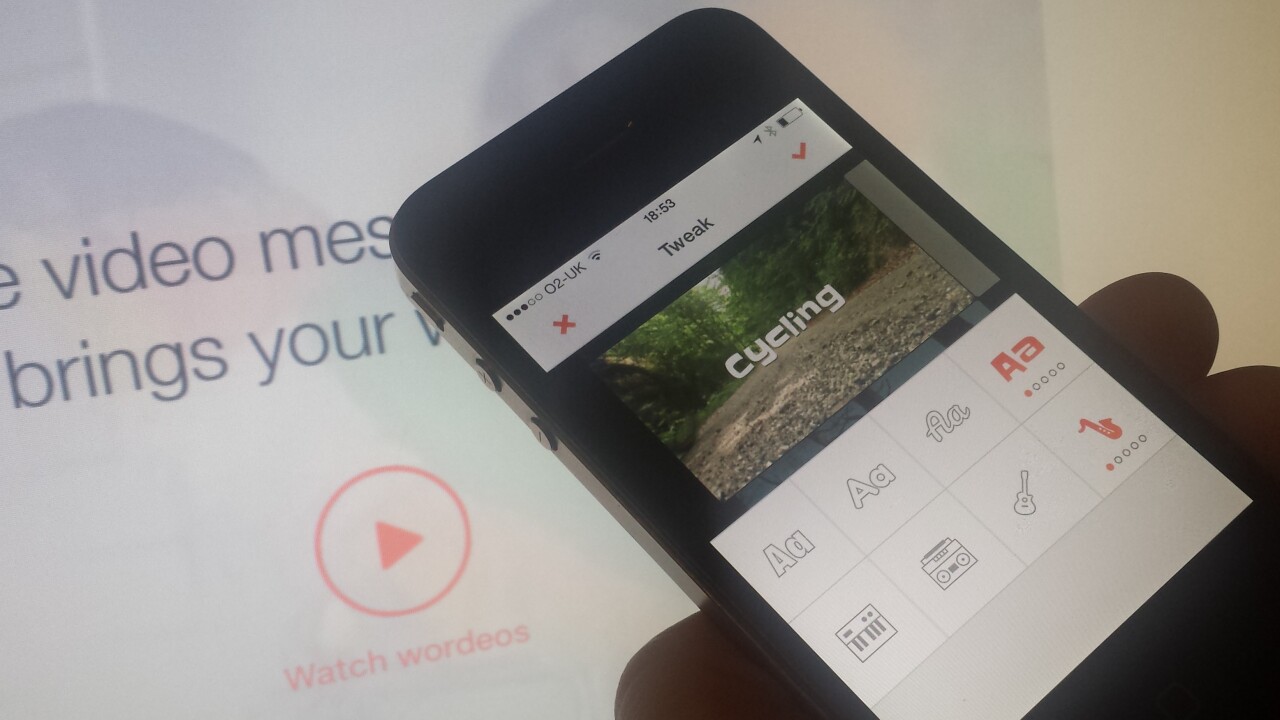
Video is very much where it’s at now, with the likes of Vine and Instagram serving the mobile masses well. And for those looking to collaborate on projects there’s Vyclone and Cameo, while Clipcam too recently entered the busy video-app fray with a neat creative tool for iPhone. Yes, there are video apps aplenty.
Now, former Apple executive David Bailey and ex-BBC iPlayer back-end builder Bob Johnson have launched Wordeo, offering their own take on what a social video-messaging app should look like.
The London-based company has been building and iterating for the past twelve months or so, and now employs around fifteen people in their Shoreditch office. We managed to grab a hands-on with Wordeo ahead of today’s launch.
How it works
Even before you create an account, you can peruse the ‘popular’ feed which gives you a flavor of what the app’s all about before you commit to signing up. Once you do sign up, however, you can start creating and sharing your own video-based messages – to do so, hit the familiar little ‘new message’ icon on the top right.
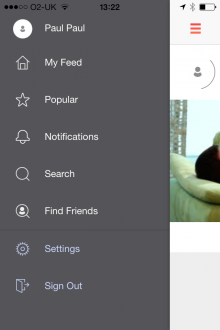

As with other social platforms such as Twitter, you post some thoughts – for example what you’re currently doing – then hit the little arrow to progress, at which point you’ll be notified that your Wordeo is being prepared. This is where things start to get interesting.
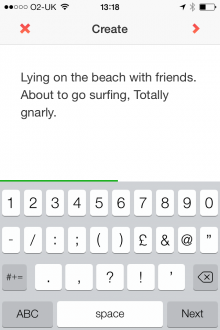
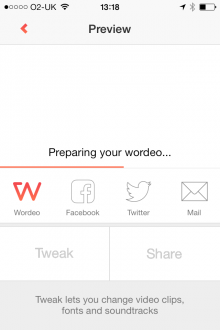
The folks at Wordeo have partnered with Getty Images to tap their enormous library of stock video and audio. Indeed, the two companies have been working closely together to hone this integration, with Wordeo’s technology automatically matching keywords from your message with relevant tags on Getty.
In the first instance, Wordeo automatically stitches together a video consisting of multiple clips. So if you’re “lying on a beach”, it will draw in snippets of someone/something lying down, and perhaps even a beach. But you don’t have to use their suggestions – hit the ‘tweak’ button and you can manually peruse the library and choose which video(s) you wish to represent your words.
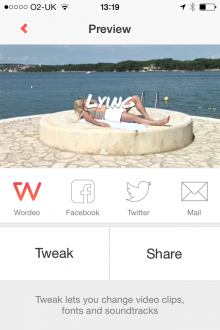
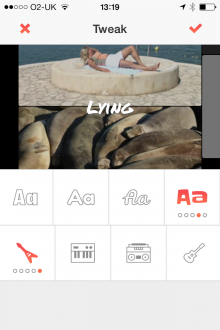
Videos are accompanied by music (also sourced from Getty), and you can choose broadly by genre (depicted by icons such as saxophones and guitars), or moods (e.g. a smiley face denotes ‘happy’).
However, if you’d rather use your own video, Wordeo lets you do so. You simply pull down from the top from within the library, and you can record something on the spot or access your camera roll. It captures video only – audio isn’t included.
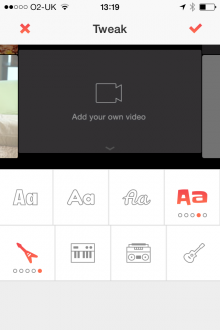
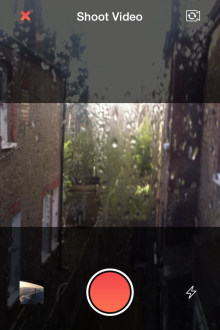
Wordeos can be made from clips of up to two seconds long, with a total length of 30 seconds combined. And while there’s no set word-limit per se for the message, if the number of words with videos associated means it will exceed 30 seconds, you will be notified and asked to edit. For example, words such as ‘the’, ‘and’ or ‘on’ almost certainly won’t have a relevant video, but that’s not stopping you from including your own.
I actually wasn’t too sure about this at first – initially I thought it would be better if it automatically lumped such ‘breather’ words together with a noun – so ‘on the beach’ would be a single entity, rather than ‘on’, ‘the’ and ‘beach’. But as co-founder Bailey explained to us, during the closed beta phase the feedback garnered suggested that this actually helped with the general pace of a Wordeo.

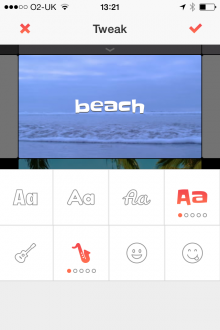
Indeed, the more I used it, the more I gravitated towards that way of thinking, and it does actually work. That said, the Wordeo team will be open to changing this based on feedback from more users when it goes public.
With your final creation good to go, you can share to Facebook, Twitter or email, or just copy the link to include in any third-party app. There’s also a little notifications tab that tells you if someone ‘likes’ your skit, or starts following you in-app.
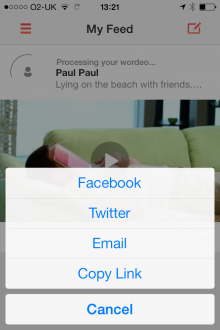
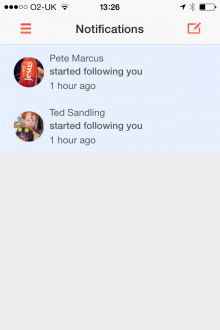
Though the mobile app is iOS-only for now, anyone can view the videos in any browser – without the need to create an account. This is crucial in my view, as it means that anyone can see your handiwork with minimal fuss – and if they like it, they might just download the app for themselves.
The verdict
The exact use-cases for Wordeo are fairly broad – it could be anything from creating short video-messages to email your mum, to interacting with a bunch of strangers a la Twitter.
The key to using Wordeo effectively is to choose the right words and “think visually”, as the company puts it, when constructing the message. If you write in colloquialisms, and say things such as “just soaking up some rays down the local promenade” as opposed to “lying in the sun at the beach”, then this won’t work. Also, it will be of limited use in the non-English language market for now.
The integration with Getty’s library is an interesting move for sure – instinctively my assumption would be that most people would rather share actual videos of what they’re doing as opposed to generic stock clips. Having the option to do both, however, is a good move though I do wonder if people would like the option of including their own audio – such as verbal greetings.
Above all else, however, Wordeo is a very beautifully crafted app – there’s a lot of attention to design detail here. Whether people are ready for yet another video-messaging app remains to be seen, but we will be tracking these guys to see how it progresses.
Wordeo is rolling out globally now and should be available wherever you are shortly. It’s optimized for iPhone and iPad touch just now, but we’re told an Android incarnation is in the works, as is an iPad-specific version – so watch this space.
➤ Wordeo
Get the TNW newsletter
Get the most important tech news in your inbox each week.



